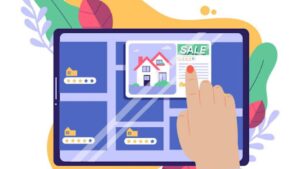
There are many platforms used for mapping, geospatial analysis, and territory management. When searching for software to visualize spatial data, plan routes, and generate actionable reports, many users try to compare options with Maptitude. This review examines the five best alternatives, comparing features, pricing, technology updates, and target user groups as of June 2025. The facts presented use the most recent data available.
1. Maptive
Maptive is a commercial mapping tool used for logistics, field sales, data visualization, and business territory planning. It uses Google Maps as its base. Maptive fits the needs from single users to enterprise-level teams and is recognized for handling large datasets with flexibility.
Features
Maptive’s core features include:
- Upload and map thousands of location records from spreadsheets or other data files
- Territory management, allowing users to split, merge, and edit geographies efficiently
- Customized marker icons, demographic overlays, labels, and filter controls built for business data review
- Route planning and optimization for more than 70 stops per trip using current road data
- Distance and drive-time calculation for customizing service areas
- Multi-layer support to compare and visualize several data sources together
- Export options to PDF, images, or shareable maps
- Real-time collaboration tools for teams, supporting more than 10 live editors per map
Maptive responds to customer feedback by adding tools for new use cases. Notable updates include improvements in the accuracy of drive-time polygons and support for grouping territories by custom demographic ranges. CRM integrations, including Salesforce and Zoho, are now in early access. More integrations are planned.
Maptive iQ Update
Maptive IQ is the latest update as of June 2025. It brings enhancements in both performance and function:
- WebGL rendering speeds up map display and smooth interaction even with large datasets (over 75,000 points)
- Split-screen views allow users to compare maps or data tables side by side
- New polygon drawing tools provide up to four-hour drive-time area calculations with high precision
- Expanded application programming interface (API) connectivity lays the foundation for custom apps and workflows
The rollout began in early June 2024 as an optional upgrade. About 12 percent of current users are using the early-access release as of this writing. User feedback shows that users are achieving up to 33 percent faster territory mapping and reporting up to 19 percent fuel cost reductions in logistics scenarios. The rollout is expected to finish by December 2025, with continued support for the older platform until at least December 2026.
User Feedback
Maptive receives average user satisfaction of 90 percent according to recent software review platforms. Large organizations like the Royal Bank of Scotland use Maptive to reduce travel costs by up to 18 percent through improved territory mapping. The BRAC Institute of Governance and Development reports improvements in research efficiency and map readability. Team adoption rates are high due to spreadsheet integration and multi-user access.
Pricing
Maptive uses a tiered plan structure:
- $250 for a 45-day pass (single user, short-term use)
- $1,250 per year for a single user license
- $2,500 per year for five users
- Enterprise plans are available, supporting up to 100,000 locations per map and additional admin controls
The annual fee includes updates and support. There are no per-feature fees within each tier, which allows a predictable budgeting process.
Key Points
- Suitable for sales, logistics, site selection, and territory planning
- Large dataset handling
- Fast map generation (average under 5 seconds for 10,000 rows)
- Custom boundary drawing and demographic reporting
- Used by businesses, research, non-profit, and training organizations
- Efficient onboarding for new team members (user guides and videos provided)
- Rapid iQ update adoption, phased by customer segment
2. Esri ArcGIS
Esri’s ArcGIS platform is a long-established solution for geographic information system (GIS) users. It is popular with public sector agencies, large corporations, and universities. Its toolset covers data management, mapping, spatial analysis, and publication.
Features
Esri offers advanced spatial analysis capabilities:
- Support for three-dimensional mapping and urban planning
- Large library of base maps (satellite, terrain, street, topographic)
- Geocoding, address matching, and travel time calculation
- Spatial modeling and predictive analytics using machine learning
- Seamless integration with software like AutoCAD and SAP
Recent software versions (through Summer 2024) bring new user types. The user can now operate with roles such as Creator, Professional, and Professional Plus. This update simplifies licensing and includes deeper integration with ArcGIS Pro Basic.
Usage
Esri’s ArcGIS is used by 350,000 organizations globally, covering both private and public sectors. According to software market analysts, Esri has a 43 percent share of the GIS platform field as of this reporting period. Their annual revenue is over 1.1 billion US dollars.
Clients like Schneider Electric deploy Esri tools for power grid mapping and infrastructure planning. In these utility and infrastructure cases, Esri’s hybrid system achieves a reported 29 percent penetration rate among relevant client sectors.
Implementation and Support
ArcGIS is recognized for its deep feature set, which requires more training and onboarding time. Internal research shows more than 63 percent of users report an implementation time of six months or longer for full deployment on enterprise projects. Support is provided by Esri’s in-house team, as well as a large user community and partner ecosystem.
Pricing
Pricing is higher than basic visualization tools:
- Entry plans are available for developers and personal use, but enterprise-level needs (like Professional Plus) cost from $3,500 per user upwards to over $23,000 per year for extensive deployments
- Academic and public-sector discounts exist, but recent contract reports show price increases up to 14 percent for education
Large clients often sign perpetual or site licenses for tens of thousands of US dollars per year.
Key Points
- Most comprehensive set of GIS functions among reviewed options
- Strong 3D modeling and data science integration
- Built-in connections to many analytical software and databases
- Supports collaboration, version control, and multiuser editing
- Higher resource and training requirements than basic mapping tools
- Higher pricing, more suited for established enterprises and governments
- Ongoing feature updates and global support
3. BatchGeo
BatchGeo is an online platform designed for quick map creation, easy visualization, and fast reporting from spreadsheet data. BatchGeo does not require specialized training and is focused on mainstream business needs such as sales, marketing, and property mapping.
Features
BatchGeo core features include:
- Fast import of Excel or Google Sheets data for immediate map generation
- Visualizations, including customizable markers, cluster grouping, and color-coding
- Route planning for up to 25 stops per trip
- Heat mapping to identify data density and clustering
- Integrated layer system for side-by-side map comparisons
- Export to static images or shareable public/private URLs
- No software installation required (fully cloud-based)
Recent upgrades added support for 100,000 markers per map, which is useful for field sales route planning and real estate inventory visualization. BatchGeo’s processing engine uses military-grade encryption (AES-256) for secure uploads.
BatchGeo introduced street view previews, reducing time spent assessing commercial properties for real estate customers by 40 percent compared to using standard listings alone. Benchmark studies on heat map accuracy show results within 92 percent of traditional manual density analysis.
Pricing
- Free plan covers small datasets (up to 250 records per map)
- “Pro” subscription costs $99 per month
- All plans include spreadsheet compatibility and unlimited maps
Refunds can be claimed within 30 days. The company has a transparent, public-facing price model and no hidden upgrade fees.
Usage and Performance
BatchGeo has created over 18.9 million maps since January 2025. There are 93,466 active users tracked as of the past quarter. Average map generation from spreadsheet upload to finished product is under five seconds in case studies.
Customers rate BatchGeo with an average of 4.7 out of 5 stars across formal review sites, highlighting compatibility with Excel and Google Sheets as a strong benefit. BatchGeo does not offer an application programming interface and is less suited for deep custom work than some alternatives.
Key Points
- Fast and user-friendly
- No downloads or advanced setup
- Strong spreadsheet integration
- Suited for business, real estate, delivery, and marketing mapping
- Built-in encryption for data privacy
- Fixed monthly fee for all users
- No GIS or programming background required
4. QGIS
QGIS is an open-source geospatial platform often used by researchers, academics, urban planners, and non-profits. QGIS is entirely free, community-maintained, and customizable. It does not compete directly with Maptitude, as it does not offer commercial support or enterprise mapping.
Features
QGIS allows the user to:
- Import and analyze geospatial datasets up to 50 gigabytes in size
- Support for dozens of vector and raster formats, including shapefiles and GeoJSON
- Customize digital maps with attributes, labels, and thematic layers
- Integrate Python scripts for workflow automation and custom analysis
- Run LiDAR data analysis with specialized plugins
- Export to static images, interactive maps, or online hosting services
The June 2024 update (version 3.38) added Python 3.11 support, better LiDAR processing, and several new tools for raster image manipulation.

QGIS usage in academic research is high. More than 73 percent of university GIS programs report using QGIS for student project work or cost-sensitive operations. Installation on Windows and Linux is straightforward, while on macOS the user must use a manual right-click Open due to non-App Store distribution.
Community & Support
Community support is strong, but there is no guaranteed official support channel. Online forums, user-contributed documentation, and regular user meetings provide ongoing improvements.
Pricing
- Free for all use cases, including for-profit or non-profit
- No feature restrictions
- Large selection of free community-built plugins
Key Points
- Suitable for advanced mapping, research, and data analysis projects
- Requires more technical skill than cloud tools
- No direct commercial support or formal training
- No web-based platform, desktop only
- Used in global education and research
- Zero cost entry, suitable for those with time to learn
5. Google Maps Platform
Google Maps Platform is familiar to many through its public mapping website. The developer platform allows business websites and software to display maps, locate addresses, and generate directions.
Features
- Public map base covering most of the globe
- Searchable business listings, points of interest, and street addresses via API
- Up-to-date navigation and traffic info
- 200 million business entries world-wide as of March 2025
- Embeddable on any business website (over 73 percent of US businesses use Google Maps as of 2025 )
- Places API, directions API, and distance matrix for workflow integration
Usage reports show the monthly free allotment is 28,400 map loads for small and medium-size business accounts. Each account receives $200 monthly credits before paid usage starts.
Google Maps is most often used to display business locations, generate driving directions, or power store locator tools. Google’s local business sections (“3-Pack”) appear in most search results. In 2025, “open near me” searches grew 400 percent year-over-year, and 68 percent of users trust the map results for local business discovery. These features are central to store traffic and local search performance but do not offer custom territory creation or high-end spatial modeling.
Pricing
- Price is quota-based beyond free usage (API pricing is documented on Google’s developer site)
- Large volume usage is billed based on map loads, address lookups, and feature use
- No upfront software purchase costs
In 2024, Google Maps’ platform revenue reached about 11.1 billion US dollars, with more than 82 percent of that from promoted marker pins and location-based ad placement.
Key Points
- Most widely used mapping platform for consumer and business web
- Useful for store locators, contact pages, marketing and sales displays
- Basic mapping and directions only
- Does not support territory mapping, demographic overlays, or advanced analytics
- No spreadsheet uploads; API or embedded widgets are required
Comparison: Key Differences and User Fit
Collaboration and Real-Time Edits
Maptive is optimized for teams editing maps live, supporting simultaneous work for more than ten editors per session. BatchGeo and Google Maps do not support this, though workspace sharing by link is possible. Esri supports collaboration but requires advanced user management and permissions. QGIS operates on a local machine only.
Data Import and Integration
BatchGeo and Maptive both allow users to upload data directly from spreadsheet files (CSV or Excel format) for mapping. Esri requires importing via the ArcGIS Data Import tools. QGIS reads dozens of formats but often needs conversion and cleaning by the user.
Google Maps does not accept spreadsheet uploads for custom maps as a built-in feature; most data import must be done through coding and APIs.
Map Size and Performance
- BatchGeo handles up to 100,000 locations per map
- Maptive supports 100,000 per enterprise plan
- Esri excels at massive geospatial datasets but is limited by hardware and plan level
- QGIS supports very large files, limited more by hardware than license
- Google Maps usage is measured by map loads, not data count
Maptive’s update to WebGL and polygon tools (iQ) improved real-time map interaction and handling of large maps with markers and polygons.
Security and Privacy
BatchGeo processes uploads using AES-256 encryption and hosts maps in secure data centers. Maptive also offers strong encryption and data privacy controls suitable for industries handling sensitive location data. Esri offers in-depth enterprise security for regulated sectors.
Google Maps is hosted by Google with standard terms for business and government use. QGIS is open-source, which allows data to be stored solely on the user’s hardware without outside access.
Specialization and Customization
Esri leads with analytic depth. It allows the creation of three-dimensional city models, advanced spatial forecasting, and enterprise reporting. Maptive adds new features using user requests and has a plugin-like model for CRM integration and workflow customization.
BatchGeo is most suitable for users who need fast visualizations and lightweight geo-analysis. QGIS, with plugins and Python scripting, covers specialized research and educational use. Google Maps is aimed mainly at address display and business finding for the general public.
Market Adoption
- Esri remains the largest provider in GIS software for established entities (enterprises, public sector, utilities).
- Maptive is gaining traction with commercial teams due to fast setup, flexible plans, and improved performance after its iQ rollout.
- BatchGeo’s low price point and simplicity sustain steady growth among small businesses and teams prioritizing affordability.
- QGIS is doctoral programs’ choice and leads in the academic sector, with more providers using it for cost control.
- Google Maps is used near-universally for business website integration and local search visibility.
Maptive iQ Rollout and Impact
As of June 2025, Maptive’s iQ update features are available to about 12 percent of existing users across logistics, field sales, and research. These users benefit from:
- 33 percent faster map creation times measured by test groups
- 19 percent reported reduction in vehicle fuel expense using new route optimization features
- New table-to-map split-screen helps non-technical users compare filters and results
- Early adopters report some learning curve adjustment to the new interface tools
Full rollout is scheduled for the end of the year, covering all paid users. The company has committed to supporting the previous version until at least the end of 2026, ensuring business continuity for existing clients.
Customer feedback as of May to June 2025 shows that rapid updates and onboard training materials support fast adoption, especially for logistics, sales, and marketing roles who rely on large, frequently changing datasets.
Conclusion
Selecting the correct mapping software depends on use case, budget, technical expertise, and scale.
- Maptive suits teams who want commercial-grade mapping features, large data handling, and expanding CRM integrations, with predictable pricing and strong support. The iQ update adds capacity for larger maps, real-time editing, and route improvement.
- Esri ArcGIS delivers deep GIS analysis and 3D modeling for those who can commit to enterprise-grade pricing and extended onboarding time.
- BatchGeo offers a simple solution for charting, route planning, and data heat mapping with low training overhead and a rapid setup process.
- QGIS gives technical users a no-cost entry for advanced processing and academic research but lacks commercial support and web tools.
- Google Maps Platform is useful for displaying business addresses and simple directions but does not provide advanced spatial analysis, territory design, or reporting.
Each platform is accurate for its target group. The rise of updates such as Maptive iQ demonstrates how commercial tools can now reach analytic and performance thresholds previously seen only in high-budget enterprise packages. The next phase in mapping tools will continue to highlight speed, ease of use, and integration with business workflow.
Customers considering a switch or an upgrade should review real use cases, trial sessions, and existing user feedback to match needs precisely. These five alternatives outline the main options available as of June 2025, each with its strengths, pricing, and fit for business or research mapping.















